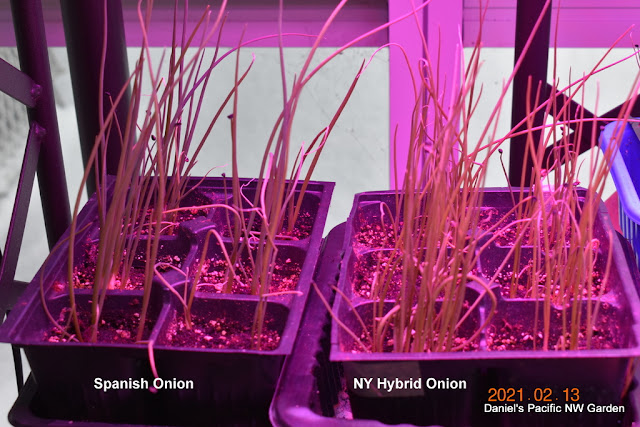Here are seedling photos for today and a few days ago. Most are doing quite well. Some are still germinating, some probably wont. I always plant extra for that reason.
The shallots had lower germination than the onions even though they are related and look the same. Still, there are some. I added more seeds to cells that had limited germination or no germination. The Japanese scallions look good. The celery germinated over a week or so, now quite good. Eggplants were uneven but there are enough. Peppers too.
The colors are weird due to the LED lights. For some, I had them too close and the leaf tips dried out. They will be OK. Some people cut off the lead tips to encourage growth from below. I don't get it, but at least these will be OK. These are the bulb or storage onions. They are growing faster than the scallions and shallots.
The two celery are from Baker Creek heirloom seeds. They are Utah and Chinese. There are various peppers, but so far I have a bunch of Jalapenos, a banana pepper, Serrano, and a Thai pepper. I dropped the cell pack for shallots, so now replanted some.
These are the two apple seedlings so far. Both are from the same apple, a Calypso pollinated by columnar Golden Sentinel. Interesting, one is red leaf and other is green leaf. I had stratified them, wrapped in moist paper towel, in zip lock, in fridge, since about August. I had to change the paper towel a couple of times due to mildew. I planted these seeds in cells that had pepper seeds that did not germinate. Then in one, the Thai pepper seeds germinated anyway :-) I can separate them later.
Here is my seed starting setup so far. I turned off the warming mats, since the seedling have germinated.
The view from outside today.
Some plants I brought in last fall.
This marigold, I dug up in the fall and planted in a container in potting soil. It was a volunteer and has been blooming all winter long.
I've dug up this geranium every fall for about six years. Maybe longer. Sometimes I let it dry out in the garage. This year I kept it going in the sunroom. Sometimes it blooms.
The nepenthes have suffered because I've been sick several times this winter, and they need more water than I gave them. Some are OK.











